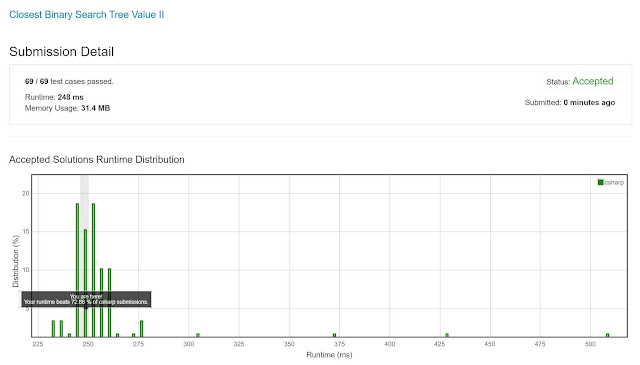LeetCode Hard Problem

Problem is here: https://leetcode.com/problems/closest-binary-search-tree-value-ii/ 272. Closest Binary Search Tree Value II Hard 524 18 Add to List Share Given a non-empty binary search tree and a target value, find k values in the BST that are closest to the target. Note: Given target value is a floating point. You may assume k is always valid, that is: k ≤ total nodes. You are guaranteed to have only one unique set of k values in the BST that are closest to the target. Example: Input: root = [4,2,5,1,3], target = 3.714286, and k = 2 4 / \ 2 5 / \ 1 3 Output: [4,3] Follow up: Assume that the BST is balanced, could you solve it in less than O ( n ) runtime (where n = total nodes)? Accepted 50,428 Submissions 103,444 I managed to solve this problem in NLogN. Initially I thought this would not work since the problem is suggesting a less-than O(n) sol...


